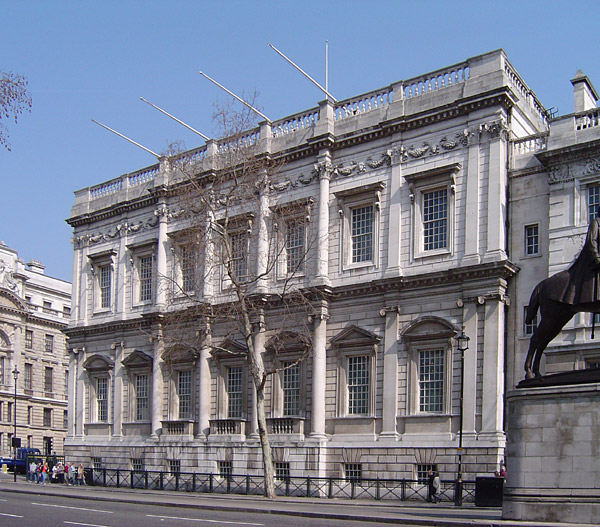
Banqueting House is now a popular event location in the heart of Whitehall, with London Fashion Week shows frequently using the space. However, the seventeenth century relic has had many lives.
Banqueting House is the only surviving part of Whitehall Palace, once the largest palace in Europe. King James I commissioned the new banqueting space from architect Inigo Jones after the previous hall burnt down. Jones’ new Palladian-style building was completed in 1622.
James and his wife, Queen Anne of Denmark, often hosted masques at Banqueting House. Masques were popular at court in the early seventeenth century; the elaborate performances often featured acting, singing, and dancing with impressive sets and costumes. Anne often took part in the masques herself, along with many other nobles.
In 1649, Banqueting House took on a very different role: that of an execution site. Following the royalist defeat during the English Civil War, King Charles I was quickly tried and convicted of treason, and was then quickly condemned to death.
On 30 January 1649, scaffolding was erected outside of the building. Charles was led outside of the first storey where he was beheaded.
However, the hall did serve a happier purpose. On 29 May 1660, King Charles II returned triumphantly to London and was taken to Banqueting House where he was placed on his father’s throne. The merry monarch would continue to celebrate his birthday at Banqueting House and frequently hosted visiting ambassadors there.
The Banqueting House luckily survived the 1698 fire that destroyed the rest of Whitehall Palace. It then took on a number of different roles as the centuries passed.
At various times, Banqueting House has been a royal chapel, a military chapel, and a museum.

